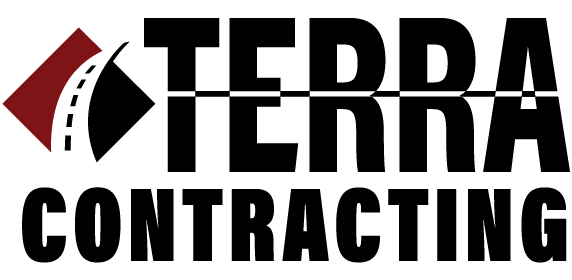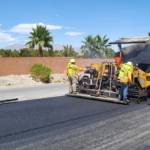TERRA Contracting is innovating again. Many in the pebble overlay industry use epoxies to “glue” the pebbles to the concrete and then place a fine film of polyaspartic over the pebbles in an attempt to keep the epoxy from yellowing, caused by the UV rays of the sun. TERRA, however, uses polyaspartic to “glue” the pebbles to the concrete, and then we place 10 mills of the polyaspartic over the pebbles. This system will not yellow.
Epoxies cure to a hard, brittle surface, which is not good for outdoor systems. If you drop a heavy object onto a hard and brittle surface, you could induce cracks, chips, and or gouges. Also, as the temperature changes due to daily and season climates, the concrete expands and contracts. Hard, brittle surfaces do not react well to movement.
Polyaspartics are different. They cure to a dense, hard surface, yet they remain pliable. Drop a heavy object onto a pliable surface and it will most likely absorb the shock, thereby eliminating any possible cracks, chips or gouges. As the temperature changes and the concrete expands and contracts, the Polyaspartic will expand and contract with it.
Why are the others using epoxies and not using polyaspartics? Three reasons:
- Because everyone else is using epoxy (they do not know what they do not know).
- Polyaspartics are more expensive, 30% to 50% more (you get what you pay for).
- Polyaspartics have a much quicker cure time, making it a bit more difficult for the installer to install (who’s afraid of a little extra work).
The drawback of Polyaspartic:
- Slightly higher cost
Benefits of Polyaspartic for Your Pebble Overlay:
- Non-yellowing (eliminating cost for follow-up work to de-yellow)
- Shock absorption
- Ability to expand and contract with temperature changes
- Quicker cure time (foot traffic in 4 hours; vehicle traffic in 12 hours)


